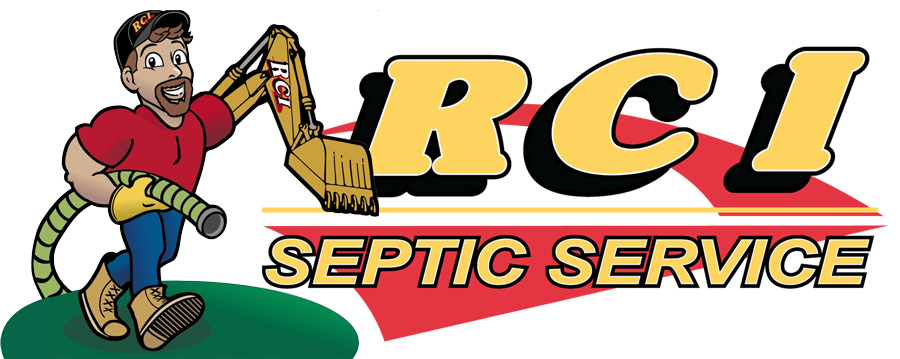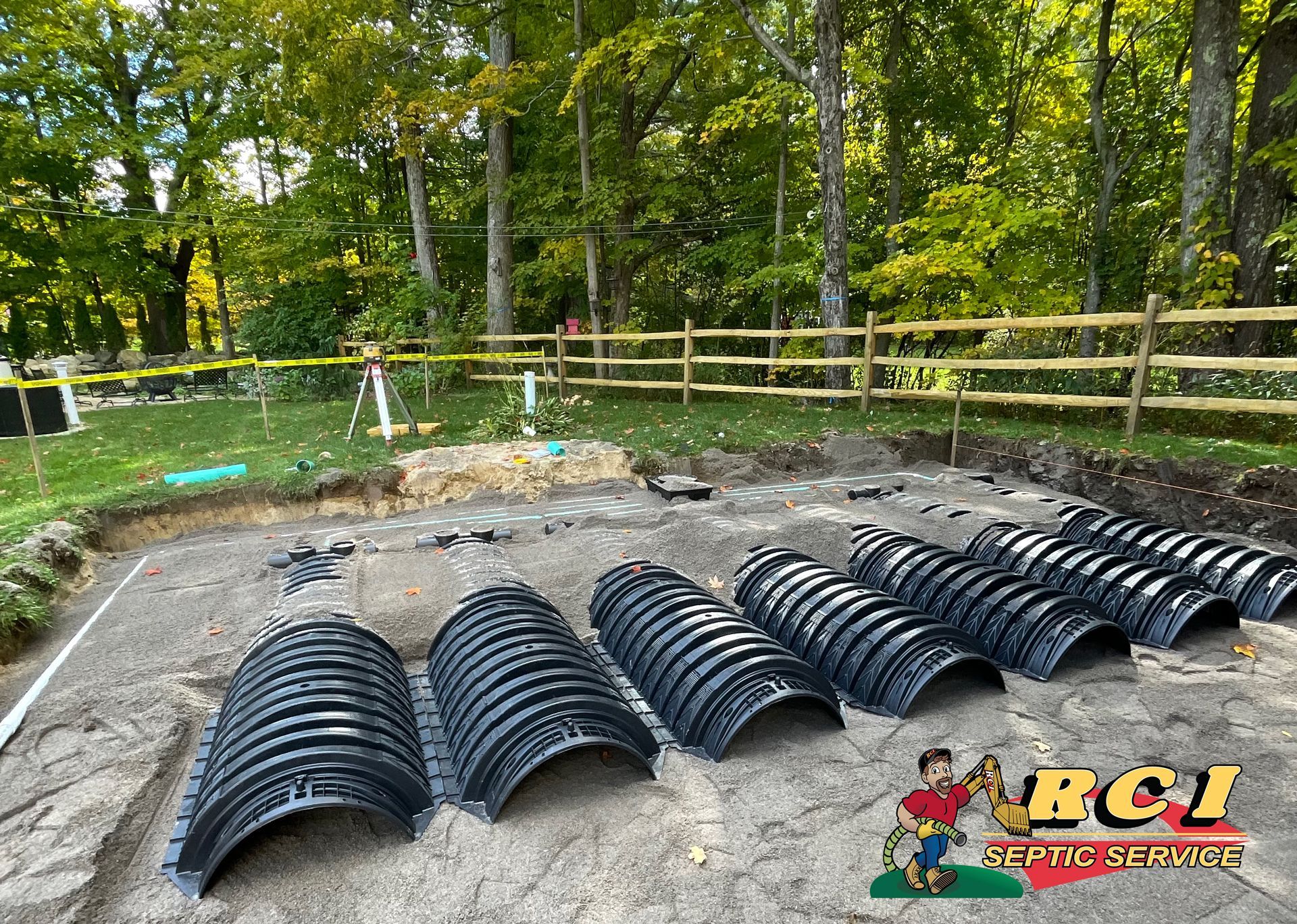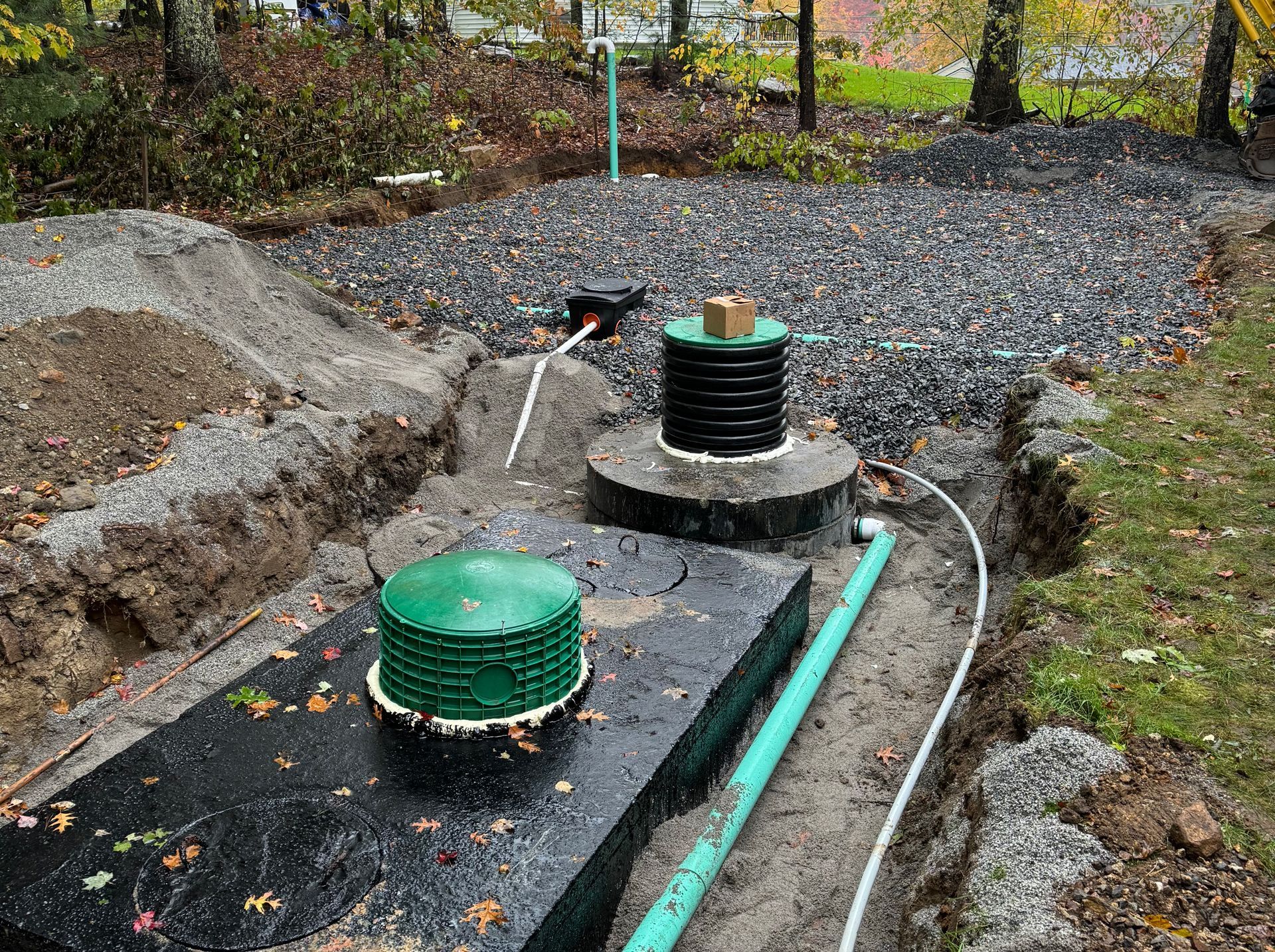Leach Drain Field: Essential Maintenance and Troubleshooting Tips
A leach drain field is essential for treating wastewater from your home and returning clean water to the environment. In this article, we’ll explain how leach fields work, highlight maintenance tips, and provide troubleshooting advice for common problems.
Key Takeaways
- Leach drain fields are essential for treating wastewater, utilizing pipes, gravel, and sand to filter out impurities and protect groundwater.
- Common signs of leach field issues include pooling water, unpleasant odors, and slow drainage; catching these early can save you from expensive repairs.
- Regular maintenance, proper waste disposal, and inspections every one to two years are key to keeping your leach field healthy and extending its lifespan.
Understanding Leach Drain Fields
A leach field, or septic drain field, is an integral part of a septic system designed to manage and treat wastewater from your home. When wastewater leaves the septic tank, it flows into the leach field, where it undergoes further treatment and dispersal into the sand and groundwater. This process is crucial for maintaining a clean and healthy environment around your property.
In a conventional septic system, the leach field works alongside the septic tank and outlet pipe to handle all the wastewater from your home. Understanding the differences between conventional systems and alternative systems, and how these septic system components and septic tanks work together, can help you better maintain your system and spot potential problems before they become serious.
Proper maintenance and regular inspections ensure your leach field remains effective. Next, we’ll explore the components of a leach drain field and its wastewater treatment process, equipping you with the knowledge to keep your system running smoothly.
Components of a Leach Drain Field
A leach drain field consists of several main components, each playing a vital role in the wastewater treatment process. The primary components include perforated pipes, gravel, and sand. These components work together to disperse and filter the effluent from your septic tank. Conventional systems typically use these components, whereas alternative systems may incorporate different materials and designs to adapt to specific local conditions.
The perforated pipes in a septic drain field are typically 4 inches in diameter and are arranged within trenches to distribute the effluent evenly. These pipes are essential for ensuring that the wastewater is spread out over a large area, allowing for effective treatment.
The trenches themselves contain a gravel layer, usually about 12 inches thick, which aids in the distribution and filtration of the effluent. In some cases, chamber systems can be used in leach fields, facilitating easier installation, especially in areas with high groundwater.
Knowing these components assists in maintaining a healthy leach field and troubleshooting any arising issues.
How Leach Drain Fields Treat Wastewater
A leach drain field serves as a subsurface wastewater disposal system that removes impurities from liquid effluent. When the effluent leaves the septic tank, it is piped into shallow trenches filled with gravel in the leach field for further filtration.
As the wastewater seeps through the perforated pipes and percolates through the gravel, it undergoes a natural filtration process. Native bacteria in the sand break down contaminants, helping to purify the wastewater. This is a crucial step in ensuring that harmful pollutants do not reach the groundwater.
The final stage of treatment occurs as the filtered treated wastewater is discharged into the surrounding sand. Here, it undergoes further natural filtration by the sand, ensuring that clean water ultimately reaches the groundwater. This comprehensive treatment process is essential for maintaining a healthy environment and preventing wastewater contaminants.
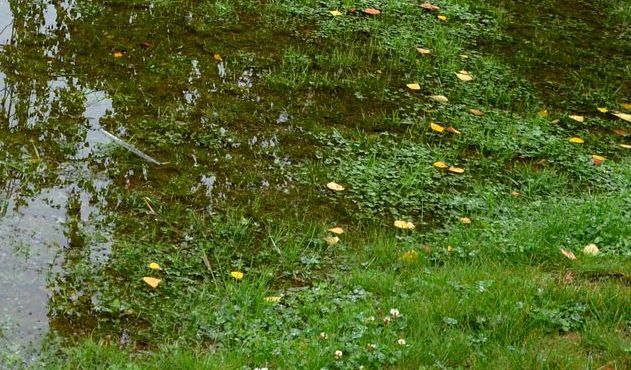
Common Signs of Leach Drain Field Problems
Knowing the signs of leach drain field problems can save you from significant headaches and costly repairs. Often, the first indication of trouble is pooling water in your yard, which can signal a full septic tank or issues with the leach field. Addressing these signs promptly is crucial.
Unpleasant odors near your septic system or leach field are another common indicator of problems. These odors can resemble rotten eggs and should not be ignored, as they often point to issues that require immediate attention. Slow flushing fixtures and drains can also indicate drainage problems within the leach field.
Regular inspections and maintenance are crucial for identifying and addressing these issues early on. Next, we’ll explore detecting sewage odors, spotting standing water, and understanding slow flushing and drains to help maintain your leach field.
Detecting Sewage Odors
Sewage odors strongly indicate problems with the leach field. These unpleasant smells, often resembling rotten eggs, can signal system malfunction. Native sand bacteria help break down contaminants, mitigating these odors.
After the effluent filters through the gravel, it undergoes further treatment by the microbes present in the sand, which helps reduce the smells. Ignoring sewage odors could lead to more significant leach field problems, necessitating costly repairs or even replacement.
Investigating the leach field and consulting a septic professional upon detecting sewage odors can prevent further damage and maintain system efficiency.
Spotting Standing Water
Standing water on your lawn may indicate insufficient drainage in the leach field, suggesting potential clogging or system failure. Improper wastewater filtration results in pooling, signaling system saturation.
Pooling water signals the leach field needs immediate attention. Addressing this promptly, whether due to excessive rainfall, high groundwater, or blockages, can prevent more significant damage and repair costs.
Slow Flushing and Drains
Slow flushing and drains are common indicators of a compromised leach field. When effluent is not filtering properly through the sand, it can cause sluggish drains and slow flushing in multiple areas of your home. This can signify a broader issue with the leach field.
Clogs in pipes or access points can cause these symptoms, affecting the leach field’s function. Excessive water usage can overwhelm the leach field, leading to slow drainage. Promptly addressing these issues prevents further damage and reduces repair costs.

Preventative Maintenance for Healthy Leach Fields
Preventative maintenance keeps your leach field functioning properly and avoids costly repairs. This involves regular inspections, proper waste disposal, and smart landscaping choices to prevent leakage, malfunction, or damage.
Indicators of leach field failure include slow drainage and soggy ground above the leach lines. Leach fields older than 15 to 30 years are particularly prone to failure, making regular maintenance even more critical. A properly maintained leach field can last up to 25 years, highlighting the importance of ongoing care.
In the following subsections, we’ll explore proper waste disposal, landscaping tips, and the importance of regular inspections to help you maintain a healthy leach field.
Proper Waste Disposal
Proper waste disposal is crucial for maintaining the functionality of leach drain fields and preventing costly repairs. Common household items like hair and grease can lead to clogging in septic systems, so it’s essential to avoid flushing these materials. Large solids, like wet wipes, should also not be flushed, as they can cause blockages in leach fields and contribute to liquid waste issues.
By being mindful of what goes down your drains and toilets, you can prevent clogs and ensure that your leach field operates efficiently. Proper waste disposal helps maintain the system’s overall health and longevity, reducing the need for frequent repairs.
Landscaping Tips
Smart landscaping choices are key to preventing damage to your leach field. Avoid using heavy machinery on leach fields to prevent sand compaction and oxygen flow restriction. Heavy equipment can compact the sand and impair drainage, leading to system failure.
Selecting plants with shallow root systems is also important, as deep roots can damage the leach field’s absorption area. By choosing the right plants and avoiding heavy equipment, you can maintain a healthy leach field and prevent costly repairs.
Regular Inspections
Regular inspections by a septic professional can prevent major issues in leach fields. Scheduling inspections every one to two years can help identify potential problems before they escalate, ensuring that your leach field remains in good condition.
Regular maintenance can significantly extend the functional life of a leach field. By keeping up with inspections and addressing any issues promptly, you can avoid costly repairs and maintain the efficiency of your septic system.
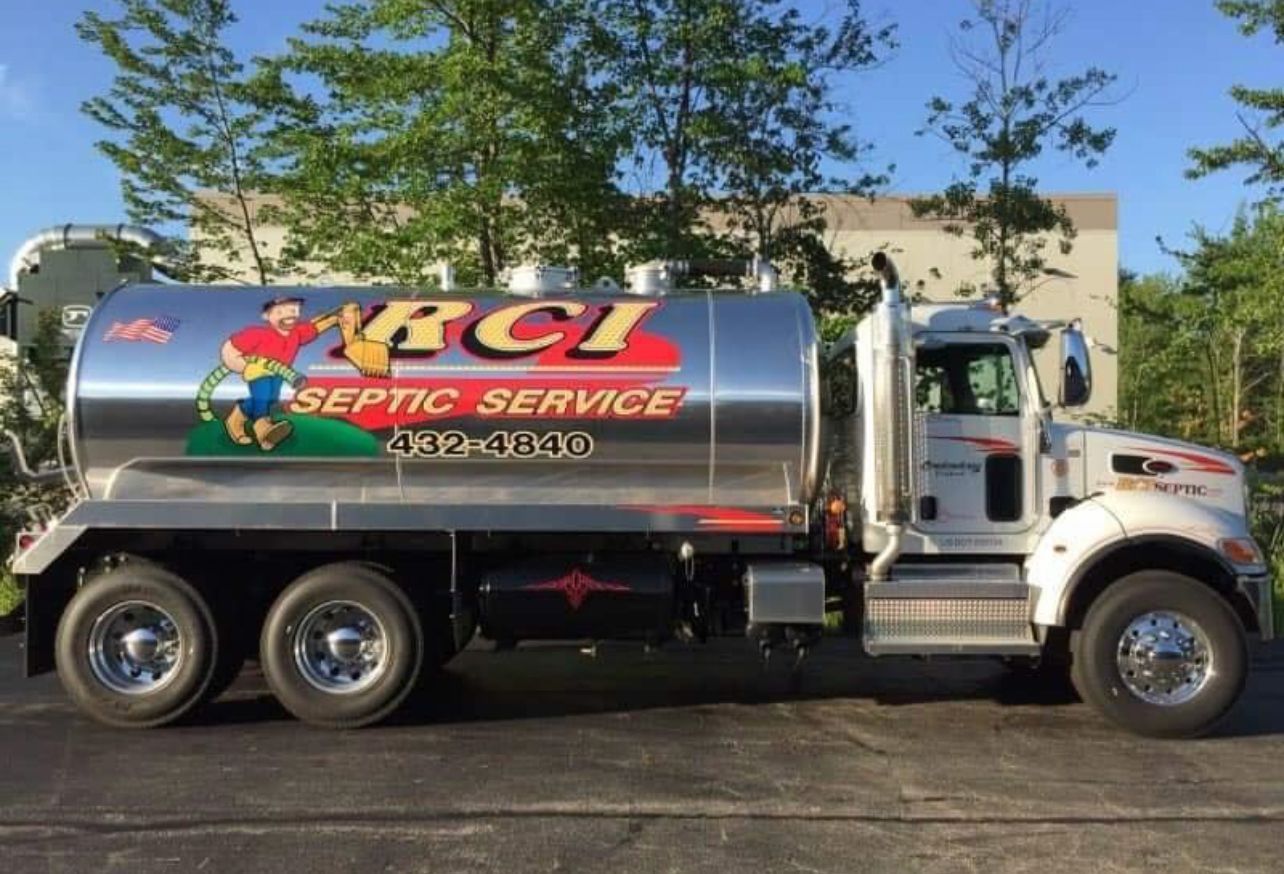
Troubleshooting and Repairing Leach Drain Fields
When issues arise with your leach drain field, troubleshooting and repairing them promptly can save you from significant headaches and expenses. Foul smells often indicate a blockage in the leach field, requiring immediate attention. A sluggish drainage system may point to a failing leach field or blockages in the plumbing.
Clogs can occur in various parts of a septic system, including pipes and filters. In some cases, a damaged distribution box can disrupt wastewater distribution, necessitating professional repair. If a clog cannot be resolved with basic methods, professional help is recommended to assess potential pipe damage.
Some clogs require professional intervention. Unpleasant smells often indicate a malfunctioning leach field, with strong odors suggesting system failure. Tree roots can obstruct pipes, necessitating mechanical augers for removal.
A septic tank professional should be contacted for complex repairs to a leach field. Major repairs can be very expensive, so it’s essential to address issues promptly and consult a professional when needed.

Local Regulations and Permits
Understanding and complying with local regulations is crucial for the installation and maintenance of residential septic systems. The area designated for a septic drain field, often referred to as a septic reserve area, is vital for future maintenance and repairs. Local regulations ensure that septic systems are installed and maintained safely, protecting public health and the environment.
In Southern New Hampshire, RCI Septic Service primarily serves the region, providing expertise in septic system installation and maintenance. These regulations govern the siting, construction, and operational standards of septic systems, taking into account factors like sand type and proximity to water bodies. Compliance is essential for avoiding fines and ensuring the longevity of your septic system.
In the following subsections, we’ll delve into understanding local codes and the process of obtaining necessary permits for your septic system.
Understanding Local Codes
Local codes dictate the siting, construction, and operational standards for septic systems, ensuring they are safe and effective. Factors such as sand type, proximity to water bodies, and land use significantly influence these regulations. In New Hampshire, the Department of Environmental Services reviews and authorizes design plans for septic systems, ensuring they meet all necessary criteria before installation.
Acquiring permits for septic system construction requires town and New Hampshire Department of Environmental Services approval. Homeowners must work with a licensed designer and installer to submit plans, ensuring compliance with local regulations. An NHDES inspector must verify the system is built according to approved plans before operation.
Two approvals are necessary: one for construction and another for operation. Obtaining these permits is essential for any changes that may increase wastewater load or occupancy, ensuring the system can handle the increased demand.
Obtaining Necessary Permits
Obtaining permits is crucial before installing or significantly repairing a septic system. Local Southern New Hampshire regulations dictate guidelines for site suitability, design, and maintenance. Understanding these codes ensures compliance with state and federal regulations.
Failure to obtain the necessary permits can result in costly fines and necessitate expensive retrofits or system replacements. By working with a licensed professional and following the proper procedures, you can ensure that your septic system is compliant and functional.
Summary
Maintaining a healthy leach drain field is essential for the overall functionality of your septic system. By understanding the components and operation of your leach field, spotting signs of trouble, and implementing preventative maintenance, you can avoid costly repairs and ensure your system operates efficiently. Regular inspections and proper waste disposal are key to preventing issues and prolonging the life of your leach field.
Advanced treatment systems offer viable alternatives for properties with specific needs, and understanding local regulations is crucial for compliance and system longevity. By staying informed and proactive, you can maintain a healthy leach field and protect your investment for years to come.
Frequently Asked Questions
What are the main components of a leach drain field?
A leach drain field mainly includes perforated pipes, gravel, and sand to effectively distribute and filter wastewater from the septic tank. These elements work together to ensure proper treatment.
What are common signs of leach drain field problems?
If you smell sewage, see pooling water in your yard, or notice that your sinks and toilets are draining slowly, those are clear signs of leach drain field problems. Time to investigate before it gets worse!
How often should I have my septic system inspected?
You should get your septic system inspected every one to two years. Keeping up with regular inspections helps catch any issues early on.
What should I avoid flushing to prevent clogs in my leach field?
To keep your leach field running smoothly, steer clear of flushing hair, grease, and wet wipes. Trust me, your plumbing will thank you!
What are advanced treatment systems, and when are they used?
Advanced treatment systems are extra units added between the septic tank and where the wastewater goes, mainly used when properties have high groundwater or space issues. They really help in processing wastewater effectively when traditional methods can’t cut it.
